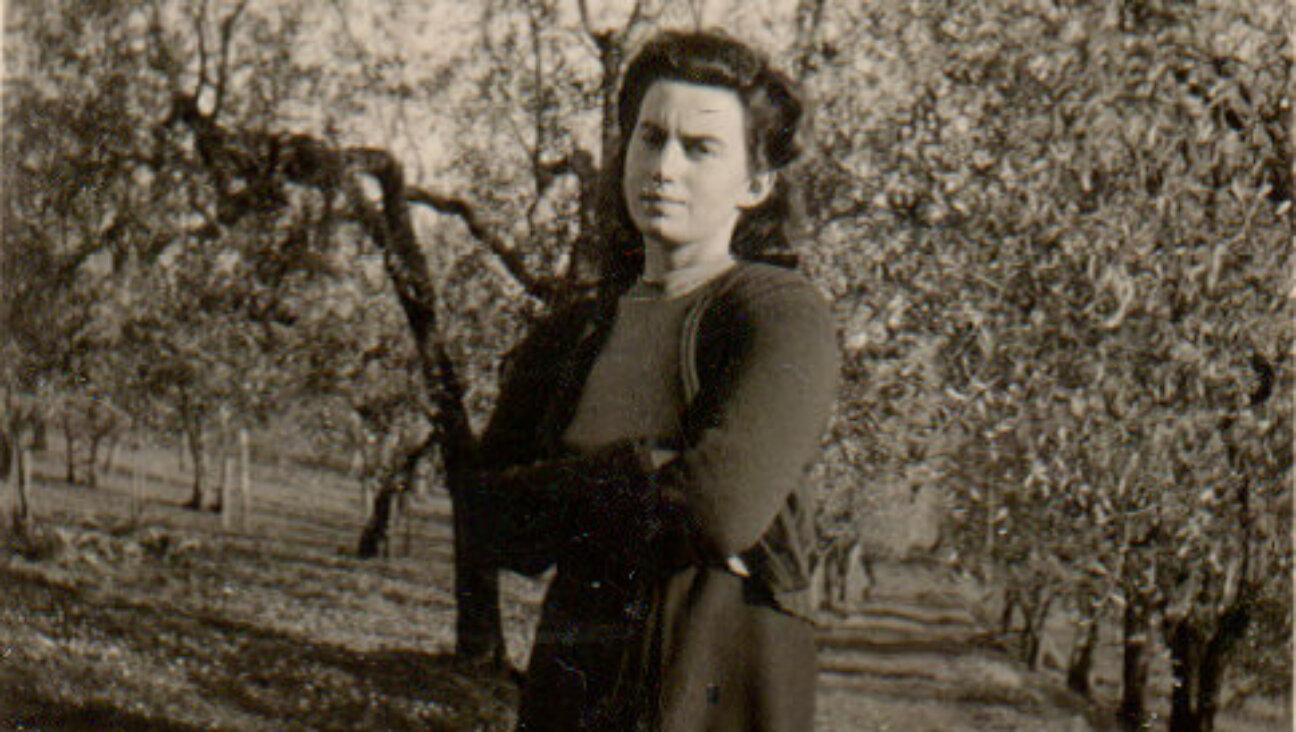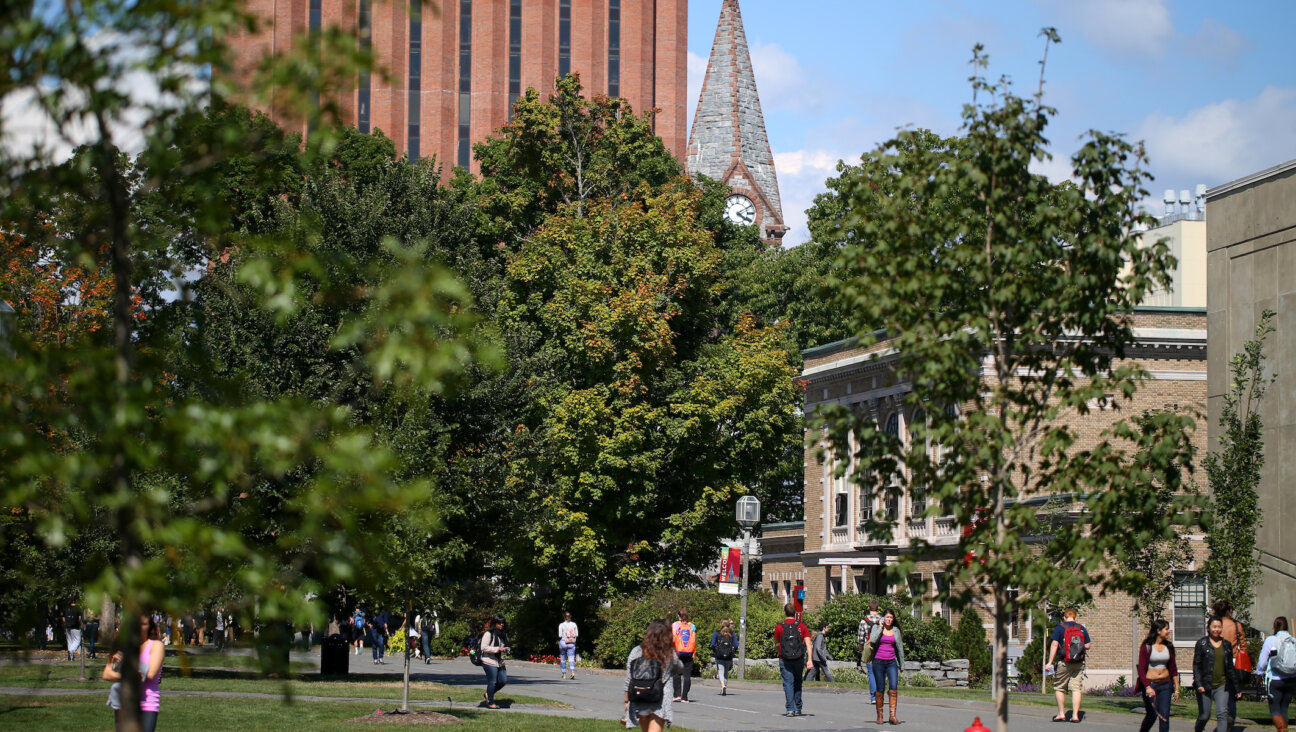‘Movement for Life’: One Woman Strives Against Gaucher
Suzanne Krupskas’s patients say that she is the best physical therapist they’ve ever seen. She’s better than most, they say, because she has a unique perspective that helps her empathize with her patients. After all, Krupskas has been coping with her own physical pain for more than 20 years.
Krupskas has Type 1 Gaucher disease, the most common Jewish genetic disease, which is particularly prevalent among Ashkenazi Jews. According to Dr. Pram Mistry, an associate professor and geneticist at the National Gaucher Center at Yale University, one in 15 Jews carry the catastrophic gene, and one in 800 have the illness. The disease occurs when a deficiency of an important enzyme called clucocerebrosidase causes fatty material to build up in the cells of the spleen, liver, lungs and bone marrow.
Krupskas, 47, was diagnosed with the disease in 1981, after experiencing horrific pain in both her hips while playing tennis with her husband, Bob, also a physical therapist.
“The pain was just so ferocious. I never had anything like that,” she recalled. “The pain is like a drilling going into the bones.”
After many tests, including blood work and bone and CAT scans, the doctors ruled out bone cancer, instead mistakenly attributing her symptoms to leukemia.
Upon recognizing her Ashkenazic background, Krupskas’s doctors mentioned that it might be Gaucher disease, which she and her husband believed to be a death sentence. When the bone marrow biopsy came back positive for Type 1 Gaucher disease, they were devastated.
“We were rocking in the bed just thinking I was going to die,” she said. “We were just fairly newlyweds and we were trying to figure out what you do before you die.”
Unlike Type 2 and Type 3 versions of the disease — which affect the brain severely and can be fatal — Type 1 Gaucher disease does not lead to premature death. But after giving Krupskas the good news, the doctors gave her the bad news: There was no available treatment, and the painful episodes she was having — called bone crises — as a result of blood supply loss to the hips would continue to happen frequently.
Krupskas had both hips replaced within the next two years. With her husband’s help, she regained full strength. Opening up a private practice in their home in Long Island, the couple was seeing success professionally as well.
But Krupskas’s health problems continued. Her hips continuously needed revision work, her blood levels plummeted and both her liver and spleen increased in size. At one point, her liver was nine times the normal size and her spleen was 33 times its normal size. She started to get recurring fractures in her ribs, sternum and hips as a result of Gaucher-related osteoporosis. Krupskas said that she and her husband were relying “on faith and the power of prayer” as her health progressively worsened.
The couple’s prayers were answered in 1988, when they found out about an enzyme-replacement therapy trial at the National Institutes of Health in Bethesda, Md. After being accepted into the trial, Krupskas and 12 other patients received the experimental treatment intravenously every two weeks for two years. The Food and Drug Administration subsequently approved Ceredase, the first effective enzyme-replacement therapy for Gaucher, as a result of this study.
During the initial two-year trial, Krupskas’s health did not significantly improve, yet she remained optimistic and full of energy. She would often see patients at night, after flying to and from Maryland for the three-hour treatment. Slowly, the therapy started to work.
Today, she can walk, dance, exercise and drive better than the average person; Krupskas makes it a point to remain in excellent physical condition. She still travels from her current home in Princeton, N.J., to Mt. Sinai Medical Center in Manhattan every two weeks for treatment.
“If it wasn’t for this treatment, she’d either be dead now or bed-bound, because that’s how severely it affected her blood levels and this is what we consider a miracle,” Krupskas’s husband said.
“No one in their right minds would ever think I was going to walk normal, but I always made it a point, always having the zest for life,” Krupskas said.
“What’s happened to her is kind of illustrative of a revolution in genetics. Not only has she been involved in advancement in understanding of the genetics of this disease, she has also been a beneficiary of advancements in treatment developed through genetic engineering,” said Mistry, who was Suzanne’s geneticist at Mt. Sinai before building a Gaucher clinic at Yale.
Cerezyme (the current form of Ceredase) is very expensive, costing approximately $11,500 for each treatment. The couple fear that their current $1 million insurance cap will run out within five years, leaving them to find another healthcare policy.
“What we now have is a very expensive treatment,” said Dr. Ernest Beutler of Scripps Research Institute, who was part of the team that came up with the original enzyme-replacement therapy.
The treatment is also not a cure. Krupskas is currently recovering from her seventh hip replacement and her first bone crisis since 1990.
“This time around I felt so horrible,” she said. “I felt as if the treatments were failing me. But you just basically try to return to normalcy somehow mentally.”
In the meantime, Krupskas is focusing on the positive, spreading her optimism to others. Doctors urged her to write about her experience and lecture before various Jewish groups and conferences for Gaucher patients. For the past 15 years, she has penned a question-and-answer column in the National Gaucher Foundation’s quarterly newsletter. Earlier this year, she wrote an article about Gaucher-related osteoporosis for Horizons Magazine, and lectured at Hadassah meetings.
Drawing on her background as a physical therapist, she has also designed an exercise manual for Gaucher patients called “Movement for Life,” and produced an exercise video with the same name.
Krupskas and her husband both feel that this battle has helped them enhance their ability to “really listen” to patients and made them both better physical therapists.
“She takes great care of her patients. She’s much more hands-on. It’s her whole persona,” said Donna Hornyak, who met with Krupskas originally for a torn muscle and herniated disk in her neck, but now is “good friends” with her.
“I have never in my life met a more positive, upbeat person than Suzanne,” said Pat Walsh, a patient who first went to Krupskas after rotator-cuff surgery and still feels a special bond with her.
Krupskas’s husband, Bob, shares his wife’s innate sense of positivity: “We’ve accomplished so much together,” he said. “We’ve had a wonderful life, despite our ups and downs.”
The couple, he said, is tossing around the idea of renewing their vows this September for their 25th anniversary.
“You take that oath when you get married in sickness and in health,” he said. “I don’t think people really understand what that’s all about until something actually happens.”
The Forward is free to read, but it isn’t free to produce

I hope you appreciated this article. Before you go, I’d like to ask you to please support the Forward.
Now more than ever, American Jews need independent news they can trust, with reporting driven by truth, not ideology. We serve you, not any ideological agenda.
At a time when other newsrooms are closing or cutting back, the Forward has removed its paywall and invested additional resources to report on the ground from Israel and around the U.S. on the impact of the war, rising antisemitism and polarized discourse.
This is a great time to support independent Jewish journalism you rely on. Make a gift today!
— Rachel Fishman Feddersen, Publisher and CEO
Support our mission to tell the Jewish story fully and fairly.
Most Popular
- 1

Fast Forward Ye debuts ‘Heil Hitler’ music video that includes a sample of a Hitler speech
- 2

Opinion It looks like Israel totally underestimated Trump
- 3

Culture Cardinals are Catholic, not Jewish — so why do they all wear yarmulkes?
- 4

Fast Forward Student suspended for ‘F— the Jews’ video defends himself on antisemitic podcast
In Case You Missed It
-

Culture How one Jewish woman fought the Nazis — and helped found a new Italian republic
-

Opinion It looks like Israel totally underestimated Trump
-

Fast Forward Betar ‘almost exclusively triggered’ former student’s detention, judge says
-

Fast Forward ‘Honey, he’s had enough of you’: Trump’s Middle East moves increasingly appear to sideline Israel
-
Shop the Forward Store
100% of profits support our journalism
Republish This Story
Please read before republishing
We’re happy to make this story available to republish for free, unless it originated with JTA, Haaretz or another publication (as indicated on the article) and as long as you follow our guidelines.
You must comply with the following:
- Credit the Forward
- Retain our pixel
- Preserve our canonical link in Google search
- Add a noindex tag in Google search
See our full guidelines for more information, and this guide for detail about canonical URLs.
To republish, copy the HTML by clicking on the yellow button to the right; it includes our tracking pixel, all paragraph styles and hyperlinks, the author byline and credit to the Forward. It does not include images; to avoid copyright violations, you must add them manually, following our guidelines. Please email us at [email protected], subject line “republish,” with any questions or to let us know what stories you’re picking up.














